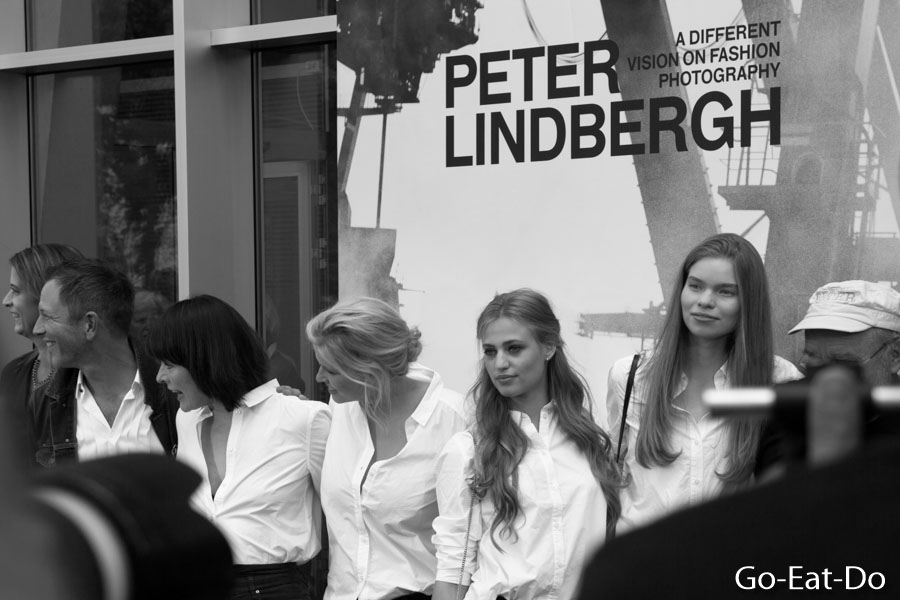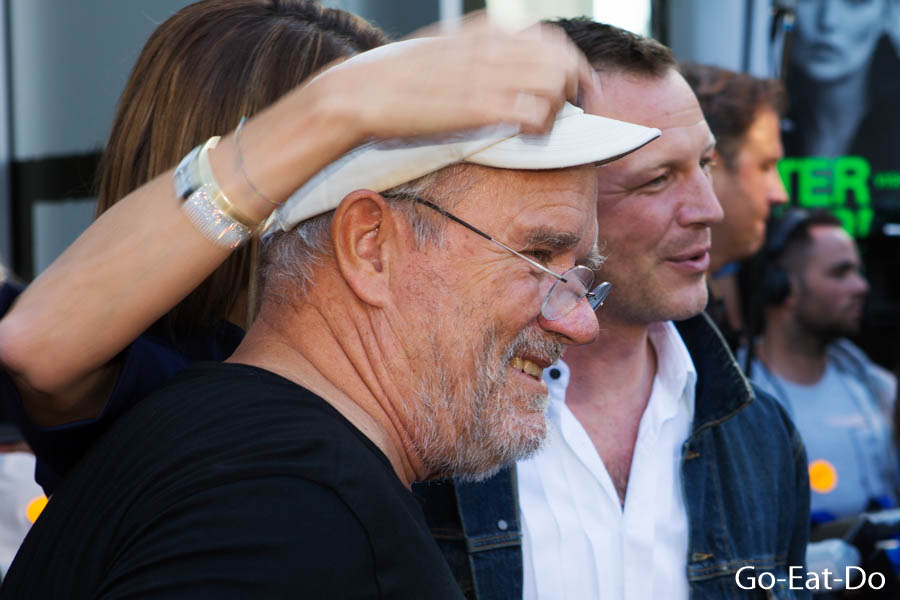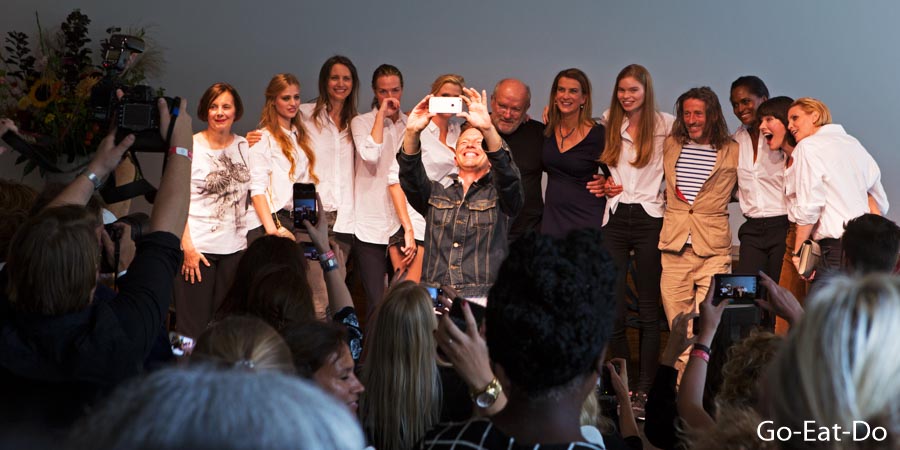Stuart Forster reports on the opening of the Peter Lindbergh: A Different Vision of Fashion Photography exhibition in Rotterdam, the Netherlands.
Disclosure: Some of the links below and banners are affiliate links, meaning, at no additional cost to you, I will earn a commission if you click through and make a purchase.
Cindy Crawford stands radiating glamour a couple of metres in front of me. Fellow supermodel Eva Herzigova struts assuredly by amidst a posse of people pointing cameras. Meanwhile, smiling and looking relaxed, Milla Jovovich jokes with a woman who wants to join her for a selfie. Like me, they are in Rotterdam for the opening of the exhibition Peter Lindbergh: A Different Vision of Fashion Photography.
Disclosure: Some of the links below, marked with a (£), are affiliate links, meaning, at no additional cost to you, I will earn a commission if you click through and make a purchase.
A Saturday evening in the company of supermodels might, for some, the stuff of bucket lists. It’s nice to be able to tick that box but the reality is we’re all here because of the German photographer Peter Lindbergh. More than 220 of his powerful black and white images will remain on display in the Kunsthal Rotterdam until 12 February 2017.
Lindbergh has been a catalyst in defining fashion photography since the 1980s. His images caused people discuss gender, sexuality and race in fashion—themes that were then taboo.
Lindbergh and the supermodel
His work was central to launching the supermodel and helped shape the careers of the likes of Tatjana Patitz, Karen Alexander and Nadja Auerman. Yesterday, during a press conference, the models reiterated that Lindbergh made them feel at ease and had the knack of getting them to express their true selves for the camera.
Yesterday evening, by chance, I met Lindbergh in the lobby of my hotel and we chatted for a couple of minutes. He was personable and I can understand why the models feel relaxed around him. He excused himself by saying he had to go to meet his friend Tina Turner, who was flying into Rotterdam on her private jet for a preview of the exhibition.
In the late 80s and early 90s fashion photography was characterised by big hair, lots of makeup and bold colours. Lindbergh’s monochrome January 1990 Vogue cover, of his models looking relaxed in white shirts, was a defining moment in fashion photography. The iconic image, it’s said, inspired George Michael’s Freedom! ’90 video.

Timeless and powerful photographs
Peter Lindbergh: A Different Vision of Fashion Photography is one of those rare exhibitions that lives up to, and perhaps even surpasses, its hype. Storyboards, notes, films and props play a part in the exhibition but, for me, it is the photographic prints that impress. Despite defining an era they have a timelessness quality. It’s not just their composition, it’s the emotions they convey.
The exhibition is curated by Thierry-Maxime Loriot, who was also behind the Jean Paul Gaultier: From the Sidewalk to the Catwalk exhibition, held at the Kunsthal Rotterdam in 2013.
The exhibition has nine sections. Many of the images on display are among the 400 or so photos printed in the Taschen book, also entitled Peter Lindbergh: A Different Vision of Fashion Photography (£):

I assume that parsing down a vast archive to just a few hundred would be a monumental task.
“It was quite easy. Peter gave me freedom to go through all the boxes and even to take out images that were unpublished and other views of images. Some people know one image but we went through the contact sheets. It was a long process to go through all the images, it took more than two years to go through all the images and to do the book,” counters Loriot.
The vision of a humanist
“I think this exhibition will be popular. It’s about dance. It’s about fashion. It’s about social issues. It’s about icons. But also it’s about the vision of a great humanist,” says the Canadian.
“Through his images you see the depth of an image you don’t normally see because we don’t have the direct contact with art prints anymore. Now everybody looks at images on Instagram, the internet or in magazines that they throw in the garbage. It’s unusual to have access to this number of images. I hope people will come, to discover the work of this great artist.”
“I think he is the last living legend of photography. He had exhibitions with Irving Penn, Helmut Newton and Avedon—they were like the three musketeers and he was the fourth,” adds the exhibition’s curator.
Inevitably, there will be people who don’t yet know Peter Lindbergh’s work, though they may well have seen his images. I ask Loriot to put Lindbergh into context, so people can understand where he stands in the panoply of photography.

The legendary Peter Lindbergh
“Historically, Peter Lindbergh is already a legend. His images are striking and different. He brought a unique way to view photography in fashion magazines. He really brought something socially that is important and necessary, mostly in terms of retouching and what he believes in the sphere of perfection. I think it’s also a great message of self-confidence and acceptance towards a young generation and anyone who’s interested in discovering a unique vision,” he answers.
“All of the images that were selected speak to me because of their strength and because of the way they are framed. Peter he frames directly with the camera. It’s not he’s going to crop after,” says Loriot.
Does Loriot have favourite images, among those displayed, I ask, admitting the question might be a touch unfair. The curator shrugs, smiles and looks thoughtful for a moment before answering:
“When you look through the exhibition, of course there are images I’m more attracted to. In the dance section all these portraits of Pina Bausch and even of Madonna for the Martha Graham tribute they are pure works of art. I think it’s very moving. It gives goosebumps when you see these images because somebody like Madonna, everybody photographed her, all the greatest photographers on the planet. She’s the last icon. Everyone knows her—in Africa and China. When you see her like that it’s the only different picture that she did.”
The final section of the exhibition is a Rotterdam gallery, displaying images commissioned for a Peter Lindbergh collector’s edition of Dutch Vogue. For the October 2016 magazine Lindbergh photographed Lara Stone and Elisa Hupkes in the port of Rotterdam. Images from the shoot, printed on sheets of glass, are suspended near the exhibition’s shop.
In April Peter Lindbergh: A Different Vision of Fashion Photography will relocate to Munich, Germany.
Further information
The Kunsthal Rotterdam (tel. +31 (0)10 4400300) is one of the Netherlands’ leading art institutions and open from 10am to 5pm from Tuesday to Saturday and between 11am and 5pm on Sundays and public holidays. See the Kunsthal Rotterdam website for more information about the exhibition and how to acquire tickets.
The Rotterdam Partners website has information about things to do and see in the Netherlands’ second largest city.
See the Holland website for ideas relating to tourism and travel in Rotterdam and elsewhere in the country.
Photos illustrating this post are by Why Eye Photography.
If you enjoyed this post why not sign up for the free Go Eat Do newsletter? It’s a hassle-free way of getting links to posts on a monthly basis.
‘Like’ the Go Eat Do Facebook page to see more photos and content.



